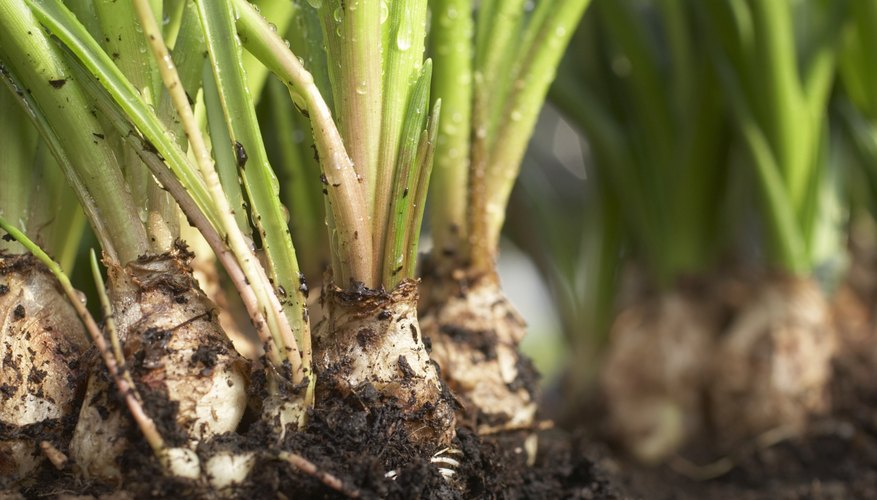A bulb garden is an easy garden to start because it only has to be planted once. However, when starting a new bulb patch, sometimes flowers that were planted by previous gardeners are unearthed. Use this guide to identify the most common garden bulbs and what they will turn into when in flower. If you are still curious about bulbs and want to learn even more about bulb identification, then you can check out a bulb gardening book at your library or buy one at your local book shop.
- A bulb garden is an easy garden to start because it only has to be planted once.
- However, when starting a new bulb patch, sometimes flowers that were planted by previous gardeners are unearthed.
Look at the shape of the bulbs that you have and separate them according to size, shape and hardness. Set aside one pile of bulbs that have a pear shape and a soft, pliable surface. Put all the smaller, firmer bulbs into another pile together. Put all of the bulbs that spread out like roots together in third pile.
Pick up bulbs from the first pile that are pear-shaped and feel them with your fingers. They should be a little soft to the touch, and can come in many different shapes. These are true bulbs. True bulbs are so named because they hold all of the nutrients they need inside the bulb. Some common true bulbs are lilies, tulips, irises and daffodils. If the bulb has a brown wrapping like an onion and is 3.7 to 10 cm (1 1/2 inches to 4 inches) long, then it is a tulip. Bulbs that are tear-shaped and beige in colour with a 2.5 to 7.5 cm (1 to 3 inch) stem on the top are irises. Bulbs that are beige coloured, 5 to 12.5 cm (2 to 5 inches) across with a lumpy shape are daffodils.
- Pick up bulbs from the first pile that are pear-shaped and feel them with your fingers.
- If the bulb has a brown wrapping like an onion and is 3.7 to 10 cm (1 1/2 inches to 4 inches) long, then it is a tulip.
Feel the bulbs from the second pile. Those that are very hard to the touch and on the small side are corm bulbs. Some common corm flowers are crocus, water chestnuts and gladiolus. Pull out any that are small, hard, round and reddish brown. They should be 3.7 cm (1 1/2 inches) long and look like an onion. These are crocus bulbs.
Look at the remaining bulbs in your collection. If there are any with tentacle-like roots sticking out, then they are probably root bulbs. Pull out any that are dark brown with a lumpy bottom, and stalks sticking out from the top. These are canna lilies. Set aside any bulbs that are dark brown and look a little like a lizard. These are peony bulbs.
- Feel the bulbs from the second pile.
- Pull out any that are dark brown with a lumpy bottom, and stalks sticking out from the top.
Once you know what kind of bulbs you have, decide the best placement for them. Bulbs are usually planted in the autumn before the ground freezes so they can bloom as the earth warms. It helps to mark which bulbs go where so you know what is going to sprout where in the spring. Keep in mind that some bulbs bloom earlier than others, so if you want a continuously blooming bulb garden, plant varieties that will come on at different times.
TIP
When identifying bulbs, looking at pictures and comparing is the best way.
WARNING
Never eat any bulb or flower that you can’t identify. It could be seriously harmful to the body.
